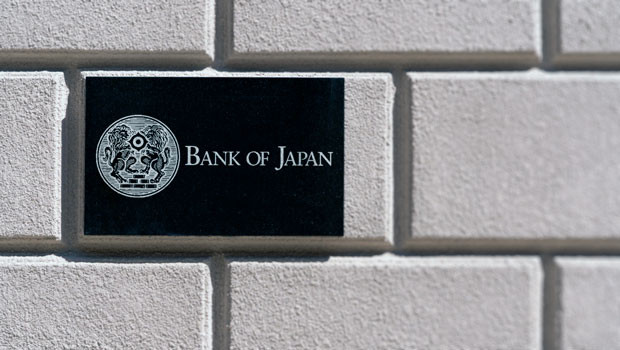Asia report: Most markets fall as Bank of Japan holds rates

Asia-Pacific markets saw a general downturn on Thursday as investors reacted to the Bank of Japan's decision to keep interest rates unchanged and monitored China’s latest manufacturing data.
Patrick Munnelly at TickMill said the region’s declines came as semiconductor stocks mirrored overnight drops on Wall Street, and after Meta Platforms and Microsoft warned of accelerating costs for artificial intelligence.
“This raised concerns about similar issues for Amazon, which reports earnings along with Apple after the close in New York today,” he said.
“The yen rose from near a three-month low against the dollar, with the Bank of Japan's statement containing some hawkish undertones, leading some analysts to suggest the possibility of a December interest rate hike.
“More broadly, the dollar took a pause, having retreated from a near three-month peak against major peers on Wednesday.”
Munnelly noted that investors were also cautious ahead of the US non-farm payrolls data on Friday, the presidential election next Tuesday, and a Federal Reserve policy decision on Thursday.
“After surveys on Chinese manufacturing and services did indicate some uptick in activity, Hong Kong's Hang Seng fell 0.3%, reversing earlier gains.
“Officials hold a week-long conference next week - investors are expecting Beijing to provide more clarity on stimulus.
“However, markets are cautious regarding another round of detail light disappointment.”
Most markets close lower, mainland China the exception
In Japan, the Nikkei 225 slipped 0.5% to 39,081.25, while the Topix edged down 0.3% to 2,695.51.
Major Japanese stocks faced significant losses, with M3 plummeting 13.53%, Kyocera Corporation falling 10.42%, and Hino Motors dropping 6.82%.
Mainland Chinese markets, however, managed a positive finish.
The Shanghai Composite rose 0.42% to 3,279.82, and the Shenzhen Component increased by 0.57% to 10,591.22.
Among the top performers in Shanghai, Fujian Forecam Optics surged 20%, with Hainan Airlines and Beijing North Star gaining over 10%.
The Hang Seng Index in Hong Kong fell 0.31% to 20,317.33.
Leading decliners included Geely Automobile, WH Group, and BYD, which fell 5.27%, 5.02%, and 4.61%, respectively.
South Korea’s Kospi 100 dropped 1.63% to 2,558.97, driven by notable losses in major firms.
Samsung C&T declined 9.93%, Hanmi Science dropped 8.35%, and Korea Zinc fell 7.68%.
Australia’s S&P/ASX 200 dipped 0.25% to 8,160.00, with Nickel Industries and AGL Energy both experiencing losses over 6%.
In New Zealand, the S&P/NZX 50 decreased by 0.44% to 12,638.90, as Restaurant Brands New Zealand, Air New Zealand, and Vital Healthcare Property Trust each posted declines exceeding 3%.
In currency markets, the dollar was last down 0.66% on the yen, trading at JPY 152.40, while it gained 0.08% against the Aussie to AUD 1.5227, and managed gains of 0.02% on the Kiwi, changing hands at NZD 1.6744.
Oil prices were in the green, with Brent crude futures last up 0.23% on ICE at $72.72 per barrel, and the NYMEX quote for West Texas Intermediate ahead 0.32% at $68.83.
Bank of Japan holds interest rates, China manufacturing data expands
At the top of the region’s economic agenda was the Bank of Japan, which announced in its quarterly outlook that it could continue raising interest rates if economic recovery held steady.
While it kept its benchmark policy rate unchanged at 0.25%, the BoJ projected Japan's “potential growth rate” to lie between 0.5% and 1%.
The bank noted that economic expansion was likely to outpace this growth rate, but highlighted the need to monitor global economic developments, especially in the US, alongside capital and financial market trends.
Japan’s retail sales data for September meanwhile showed a year-on-year increase of just 0.5%, sharply down from August’s revised 3.1% rise and marking the slowest growth since February 2022.
The lower-than-expected figure, which fell short of the 2.3% forecast by economists, could challenge the BOJ’s plans to raise rates further as it looked for a sustained boost in consumer demand to support inflation.
In China, manufacturing activity expanded for the first time since April, with the manufacturing PMI reaching 50.1, slightly ahead of the 49.9 forecast.
The composite PMI also rose to 50.8 in September, up from 50.4 in August, while the non-manufacturing PMI increased to 50.2, reflecting slight improvement in the services sector.
Reporting by Josh White for Sharecast.com.